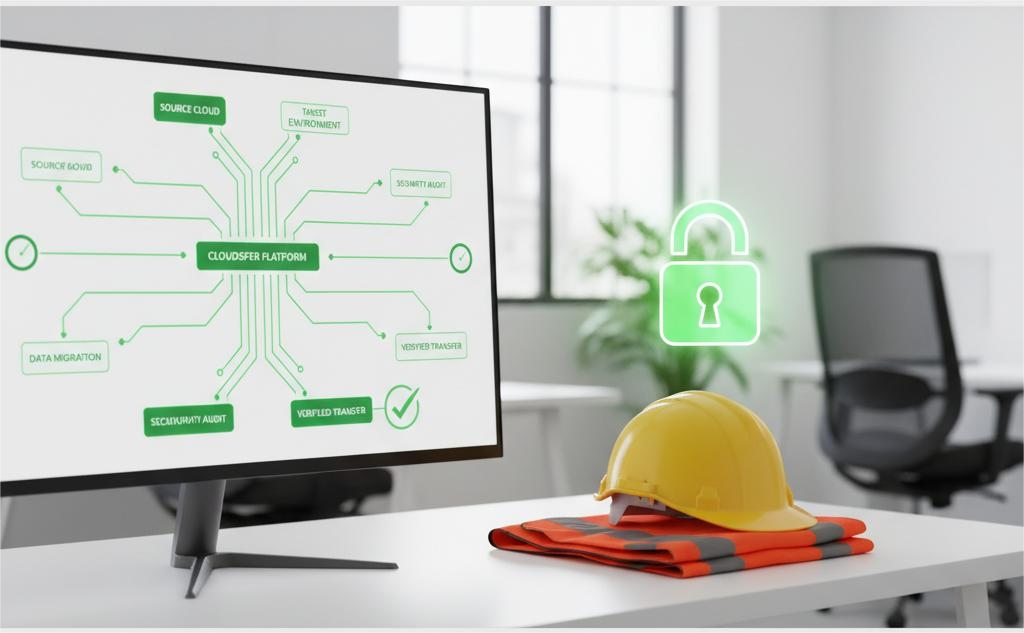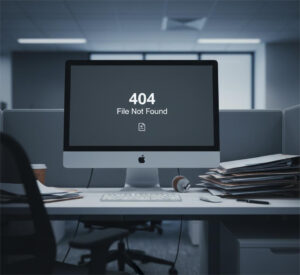You’ve been tasked with migrating hundreds of gigabytes, or even terabytes of construction project data to Autodesk Construction Cloud (ACC).
At first, it sounds like a straightforward job: you move the files, set the structure, and everything should fall into place. But as the migration begins, hidden complexities like missing files/folders, metadata like version history, and user permissions are not being transferred properly. Large model files stall halfway through.
In this blog, we’ll break down five common ACC migration challenges and show how Cloudsfer (a Gold Technology Partner of Autodesk) helps you avoid costly setbacks, especially when moving to Autodesk Construction Cloud.
What Is Autodesk Construction Cloud (ACC) and Why Migrate?
Autodesk Construction Cloud is Autodesk’s unified platform that brings together BIM 360, PlanGrid, Assemble, and BuildingConnected into one modern environment.
Migrating to ACC allows for better collaboration, future-ready workflows, and deeper integrations. But the migration process isn’t simple, especially when you’re handling terabytes of critical project data.
Challenge 1: Large Volumes of Data Slow Down the Migration
The Problem:
Migrating construction data often involves thousands of folders, drawings, models, photos, and RFIs that can add up to terabytes. A manual migration or basic tool simply can’t handle that kind of scale efficiently.
The Common Mistake:
Underestimating the bandwidth, throttling, or job segmentation required.
The Solution:
Cloudsfer supports bulk and multi-user migrations that can move thousands of terabytes of content. With delta (incremental) transfers, only the changes are migrated after the initial sync, saving time and bandwidth.
The Outcome:
Firms complete migrations faster, without exceeding quotas or bringing project teams to a halt.
Challenge 2: Metadata and Version History Often Get Lost
The Problem:
You might move the file, but lose everything that made it useful, like author info, version history, comments, permissions, and sharing settings.
The Common Mistake:
Assuming basic export/import processes preserve metadata.
The Solution:
Cloudsfer retains metadata, permissions, sharing configurations, and file version history (where relevant) during the migration process.
The Outcome:
Your project data remains usable, searchable, and audit-ready once post-migration.
Challenge 3: Live Projects Can’t Afford Downtime
The Problem:
Stopping work on active construction projects for migration can cost thousands per hour in delays.
The Common Mistake:
Treating the migration as a single cutover event instead of a phased or mirrored process.
The Solution:
Cloudsfer enables scheduled, automated syncs that let your teams run migrations in the background, like nightly, weekly, or in parallel to live work. Its delta migration ensures ongoing changes are updated without starting from scratch.
The Outcome:
Projects stay online. Teams keep working. The migration happens without disrupting your delivery schedules.
Challenge 4: No Way to Verify Migration Success
The Problem:
Once your data lands in Autodesk Construction Cloud, how do you know everything made it over correctly? Without reliable reporting or audit tools, it’s nearly impossible to verify that all files, folders, permissions, and metadata are transferred as expected.
The Common Mistake:
Teams often assume the migration is complete once the files show up in ACC.
The Solution:
Cloudsfer automatically generates detailed migration reports, including success/failure logs, skipped files, metadata, and permission summaries.
PS: You will also get an email.
The Outcome:
Post-migration audits are quick and accurate. You can catch issues early, resolve them fast, and hand off a clean, verified ACC environment to your project teams.
Challenge 5: Security and Compliance Risks Are Overlooked
The Problem:
Inadequate migration tools can expose your data during transit or, worse, store sensitive project files outside your control.
The Common Mistake:
Using tools that cache or process your data through third-party servers creates compliance and security gaps.
The Solution:
Cloudsfer uses 256-bit encryption, token-based authentication, and offers a bring-your-own-storage (BYOS) model. Your data is never stored or seen by Cloudsfer.
The Outcome:
You maintain complete control of your data throughout the migration process, with no compromise on security or compliance.
Before and After: What ACC Migration Looks Like with Cloudsfer
| Before | After (With Cloudsfer) |
| Manual file uploads, errors, and delays | Automated, scheduled migrations |
| Lost metadata, broken permissions | Metadata and sharing were preserved accurately (where relevant) |
| Security risks during transfer | Encrypted, token-authenticated, no vendor storage |
| Team disruptions | Delta updates keep your projects moving |
Feeling Ready To migrate To Autodesk?
Get started with 10% off on your first year with Cloudsfer. Please leave your details here and include the phrase “10% offer” in your message so we can apply your discount.
Verified Insight: Why It Matters
📊 A study conducted by Gartner revealed that 83% of data migration projects either fail or exceed their budgets and schedules.
That’s why using a specialized cloud migration tool like Cloudsfer matters, not just to complete the migration but to do it the right way.
Final Takeaway
By planning for the real challenges like volume, metadata, uptime, compatibility, and security, you avoid costly disruptions. And with Cloudsfer, you get a migration partner built specifically to handle all of it.
FAQs
1. What systems does Cloudsfer support for migration into ACC?
Cloudsfer supports over 20+ platforms, including Dropbox, Box, SharePoint, BIM 360, Google Drive, and more.
2. Does it preserve file version history and permissions?
Absolutely. Cloudsfer retains version history, author metadata, sharing permissions, and comments during migration where relevant.
3.How does Cloudsfer handle active project data during migration?
It supports scheduled and delta migration, meaning you can migrate in phases without halting project activity.
4. Is my data safe with Cloudsfer?
Yes. All transfers are encrypted, token-authenticated, and Cloudsfer does not store or cache your data.
5. What kind of support does Cloudsfer provide?
24/7 expert support is available to assist with planning, execution, and troubleshooting.






